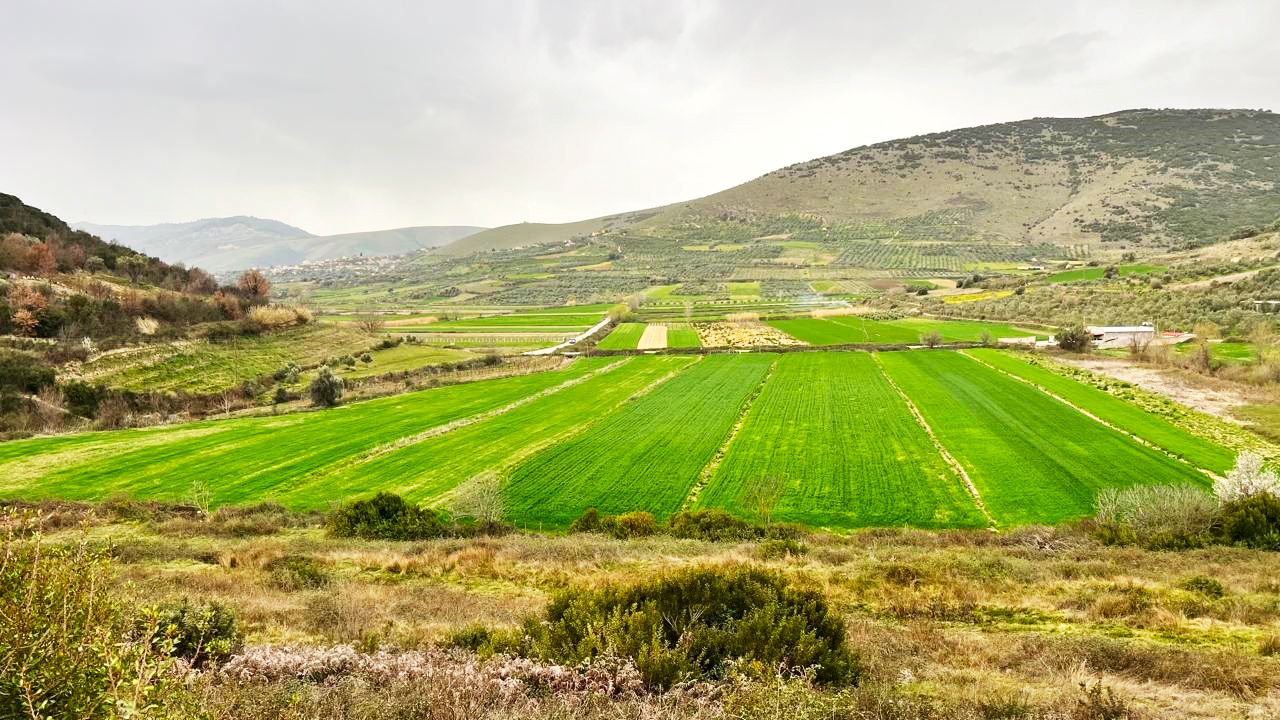The Çorrush Reservoir, located in Vjosa river basin in south-west Albania, is where activities for the Phase II of the WEFE Nexus Assessment in Albania are being implemented within the framework of Child Project 2.2 of the GEF UNEP/MAP Med Programme, executed by GWP-Med. A pre-feasibility study for a set of interventions is being prepared aiming to demonstrate how coordinated investments in water management and irrigation infrastructure can drive agricultural productivity and regional development. The findings from the study are expected to inform future related interventions across Albania’s many irrigation reservoirs most of which are in urgent need for modernisation.

Albania, together with Lebanon and the Tanger-Tétouan-Al Hoceima region in Morocco are the three priority areas of the Child Project 2.2 “Mediterranean Coastal Zones: Managing the Water-Energy-Food-Ecosystems Nexus”. The WEFE Nexus approach is essentially about moving beyond the traditional sectoral thinking and adopting an integrated and coordinated approach with a view to reconciling sectoral interests, resolving conflicts by effectively managing trade-offs, and capturing intelligent synergies, while providing opportunities for innovation and enhanced resource efficiency.
The activity builds on the findings of Phase I Nexus Policy Dialogue in Albania, undertaken in the framework of the ADA-funded SEE Nexus Project. One of the key challenges that were identified in Phase I, with strong cross-sectoral implications, was the pressing need to rehabilitate Albania’s Irrigation and Drainage infrastructure and in particular the many reservoirs scattered around the country.
The pre-feasibility study being prepared under Phase II will identify a specific set of technical interventions that will bring benefits across sectors (water, agriculture, energy, tourism) while modernising the related infrastructure and addressing the challenges and needs of the local community, and quantify related costs and benefits.

Located in the Mallakastër municipality and built in 1967, the Çorrush Reservoir was originally designed to irrigate 480 hectares. Today, it serves only 200–250 hectares, hindered by embankment erosion, sediment accumulation, and an outdated open-channel water distribution network.
The activity undertaken under Phase II seeks to revitalize the reservoir through a series of targeted interventions such as modernizing the irrigation infrastructure, enhancing dam safety, exploring the possibility of expanding the irrigated area, and identifying alternative uses such as tourism, or energy generation.
During the Inception phase, the country’s reservoir systems and relevant legal frameworks were assessed. Similar initiatives from other regions were identified and the current condition of the reservoir as well as the functionality of the irrigation and drainage system connected to Çorrush was assessed, laying the groundwork for effective intervention planning.

The first Multi-stakeholder Consultation Meeting that took place on 3 June 2025 in Tirana, gathered insights, aligned priorities and ensured broader stakeholder commitment to the project. The meeting brought together representatives from the Mallakastër municipality as well as related national institutions such as the Water Resource Management Agency (AMBU), the Ministry of Tourism and Environment (MTE), and the National Agency for Agricultural and Rural Development.
Data collection efforts have also commenced and will continue in parallel with the identification of a portfolio of intervention options. These interventions will be based on detailed indicators while the list of interventions will be refined in order to ensure they are context-specific and actionable. Potential financing sources will also be identified, such as government grants, development banks, PPPs, climate funds, and green bonds.
Ultimately, as part of ongoing efforts to strengthen sustainable natural resources management, the project will develop an Action Plan that will outline concrete recommendations on how the solutions identified can potentially be upscaled across Albania. Aiming to translate cross-sectoral insights into policy recommendations and practical guidance for decision-makers the ultimate goal is to support the integration of the WEFE Nexus approach into planning processes and management practices at the national and river basin levels.
To increase alignment and ensure real-world applicability, the activity and its findings aim to feed into existing or emerging strategies and plans, enhancing the likelihood of adoption and long-term impact.
By analysing the interlinkages across WEFE Nexus sectors the project highlights the benefits of Nexus thinking to provide customized solutions to existing challenges and serves as a catalyst for its implementation in Albania, the Western Balkans and across the Mediterranean region.
(Photographs by IRDA)
The Concept Note and the Agenda of the consultation meeting, in English and in Albanian, are available at the right-hand side box.
